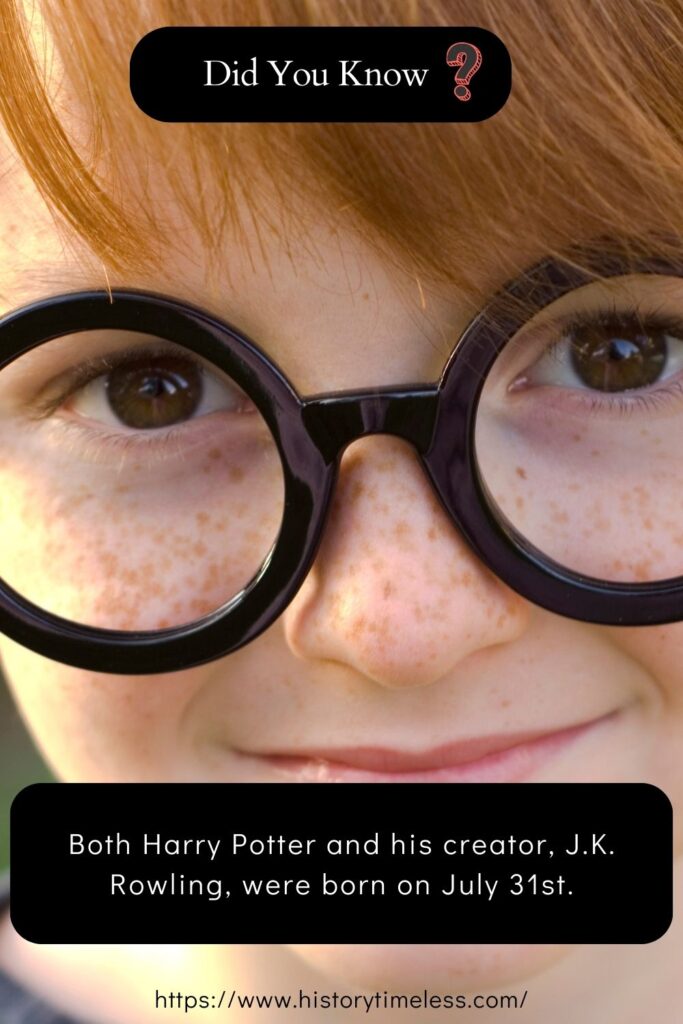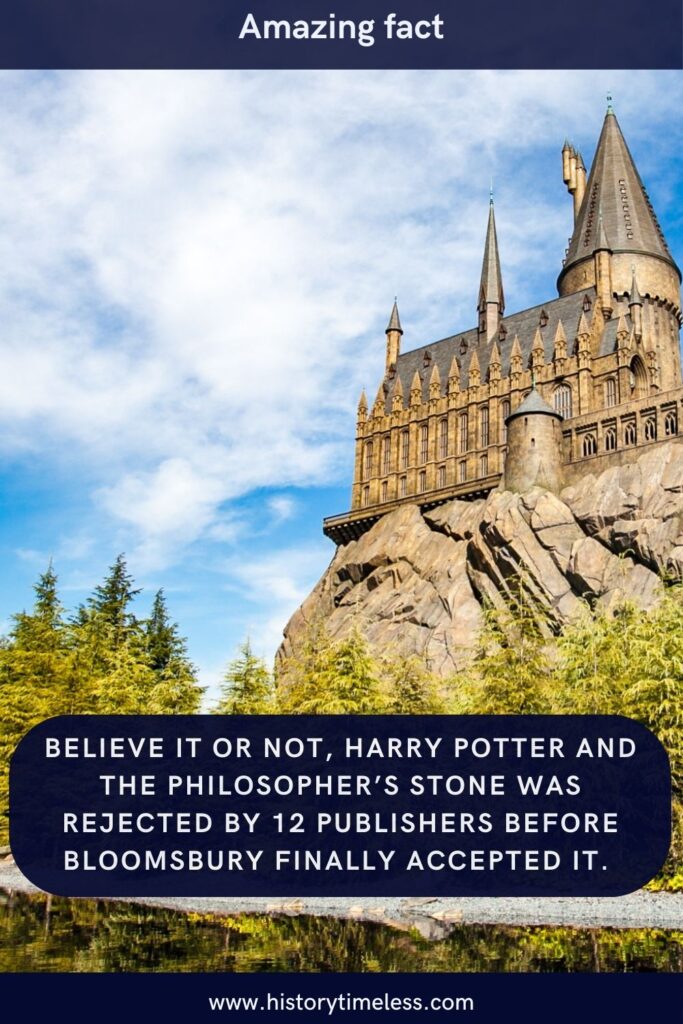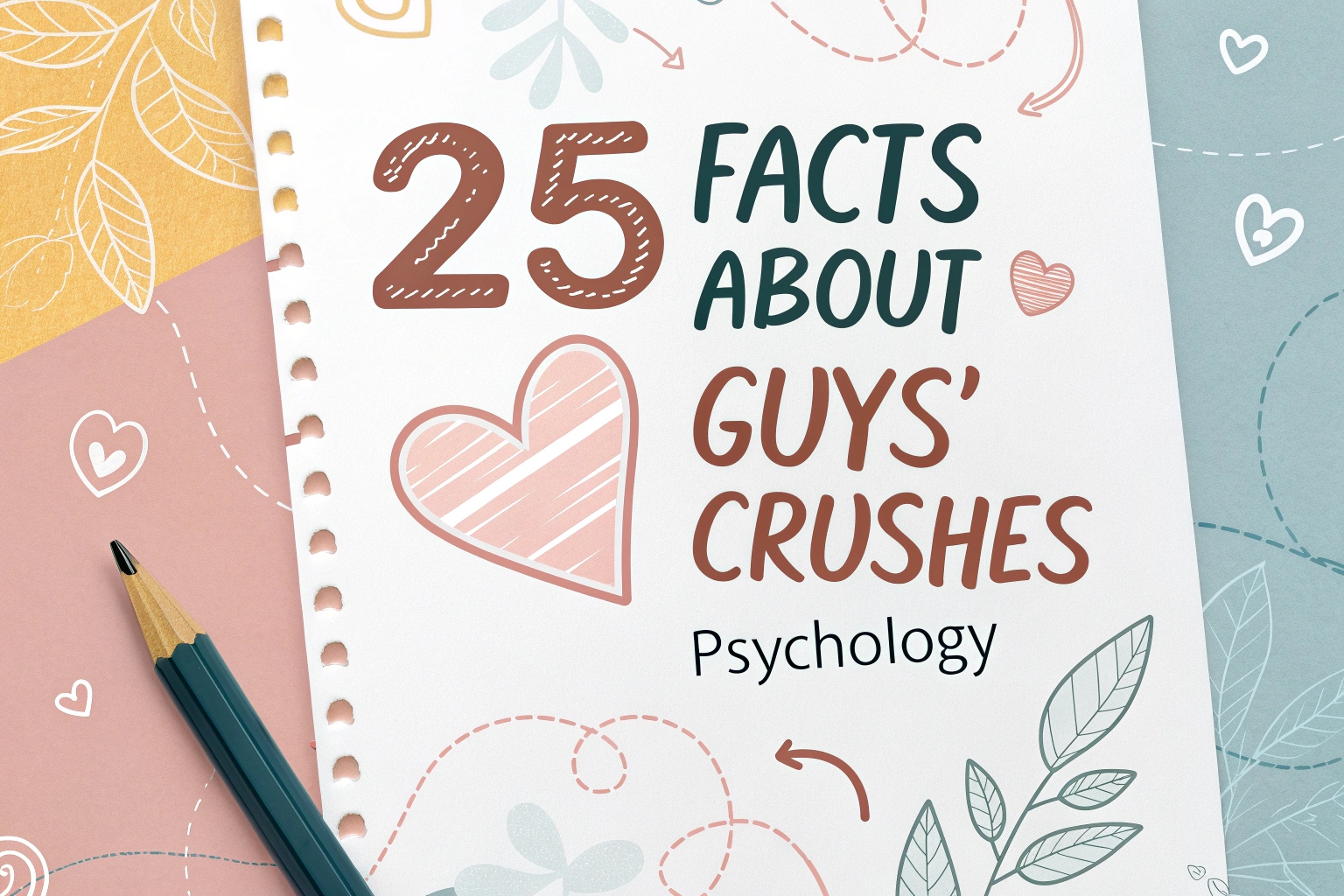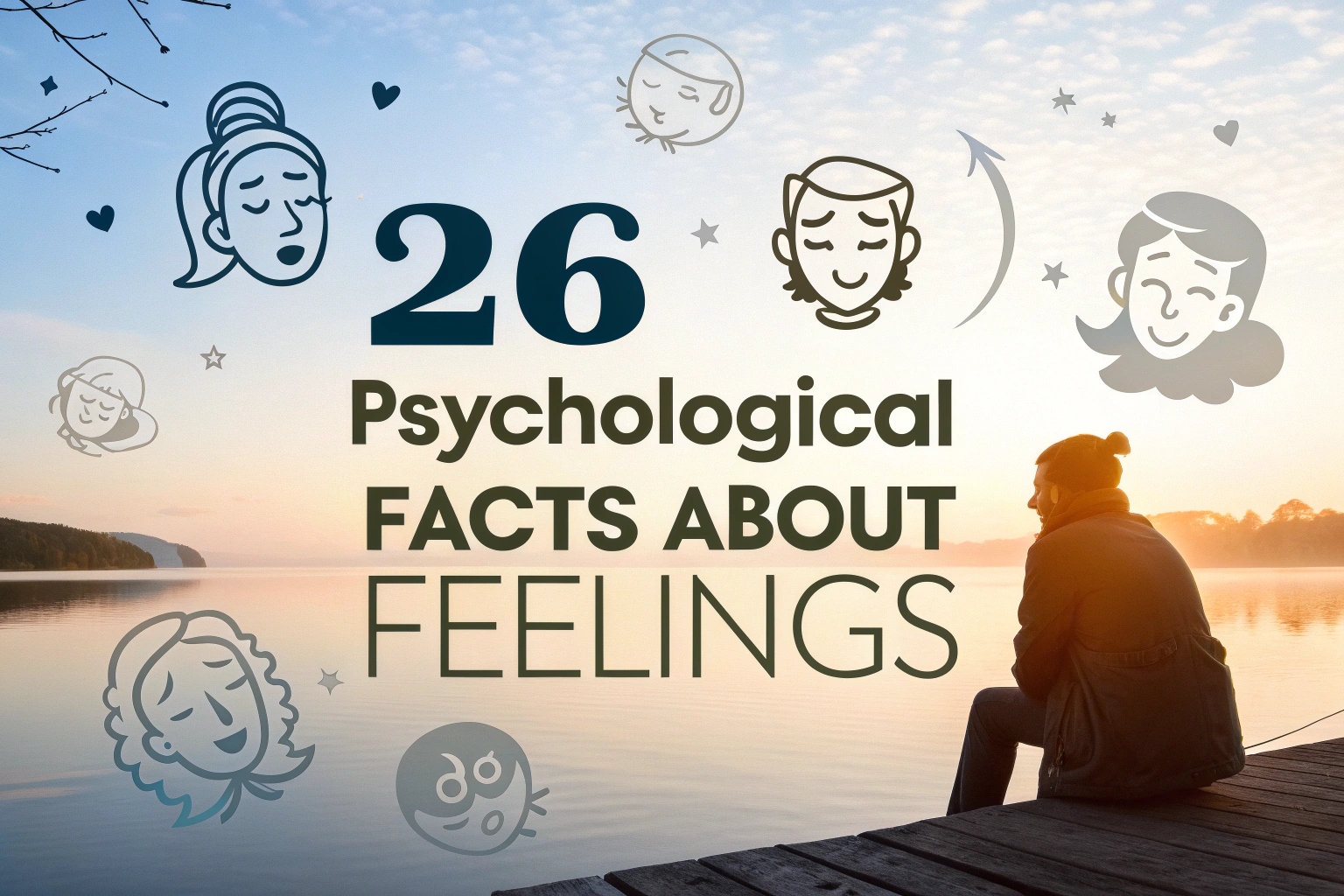Harry Potter isn’t just a book or movie series—it’s a magical universe that has inspired generations. From Hogwarts houses and spellbinding creatures to deep friendships and epic battles, J.K. Rowling’s world is full of charm, mystery, and surprising details.
Even if you’ve read all the books and seen all the movies, there’s always something new to discover. In this post, we’re diving into 10 fascinating and lesser-known facts about Harry Potter that will make any fan say, “I didn’t know that!” Ready to revisit the wizarding world? Let’s go!
1. J.K. Rowling and Harry Potter Share a Birthday
Both Harry Potter and his creator, J.K. Rowling, were born on July 31st. This wasn’t just a coincidence—Rowling gave her famous character her own birthday, creating a subtle but meaningful connection between the two.

Fans often celebrate this magical date with rereads, marathons, and themed parties. It’s just one example of how personal touches in the Harry Potter series helped make the story feel more real, giving readers a deeper connection to the boy who lived and the woman who imagined him.
2. Hogwarts’ Name Was Inspired by a Real Plant
J.K. Rowling got the idea for the name “Hogwarts” from a plant she once saw at a botanical garden. The plant was called hogwort (Croton capitatus), and the name stuck with her.
Later, when creating her magical school, she tweaked the name slightly and gave us Hogwarts School of Witchcraft and Wizardry.
It’s a fun example of how even the most fantastical elements of fiction can be rooted in real-world inspiration—even something as simple as a plant label.
3. The Actors Weren’t Told Their Characters’ Futures
During filming, many of the actors in the Harry Potter series didn’t know how their characters’ stories would end. J.K. Rowling kept future plot twists close to her chest to prevent spoilers, which meant that actors like Alan Rickman (Snape) had to trust the journey without knowing the destination.
In Rickman’s case, Rowling gave him a private clue about Snape’s love for Lily early on, which helped him shape the character’s iconic performance, even before the final books were released.
4. The Dementors Represent Rowling’s Battle With Depression
Dementors, the dark, soul-sucking creatures introduced in The Prisoner of Azkaban, were inspired by J.K. Rowling’s personal struggle with depression.
She has openly spoken about this, explaining that the feeling of numbness, fear, and hopelessness associated with dementors mirrors the emotional experience of depression.
This raw honesty gave depth to the magical creatures and allowed readers—especially younger ones—to understand mental health in a powerful, metaphorical way.
5. Fred and George Were Born on April Fool’s Day
Talk about perfect timing! The mischievous Weasley twins, Fred and George, were born on April 1st—April Fool’s Day. It’s a clever and fitting detail that matches their prankster personalities.
From turning corridors into chaos to opening their own joke shop, these brothers were the heart of comic relief in the series.
Their birthdate is another example of Rowling’s attention to character detail and her love for aligning traits with symbolic dates.
6. Hagrid Was One of Rowling’s Favorite Characters
J.K. Rowling has said that Rubeus Hagrid was one of her favorite characters to write, and it’s not hard to see why.
As the gentle half-giant with a fierce love for magical creatures, Hagrid plays a critical role in Harry’s life—welcoming him into the wizarding world and always being there with loyalty and warmth.
Rowling even said that if she could have dinner with one of her characters, it would be Hagrid. His combination of humor, heart, and bravery made him unforgettable.
7. Tom Felton Originally Auditioned for Harry and Ron
Before being cast as Draco Malfoy, actor Tom Felton auditioned for both Harry Potter and Ron Weasley. Though he didn’t land either of the lead roles, his natural sarcasm and sly confidence made him perfect for the Slytherin antagonist.
Felton went on to deliver a memorable performance as Draco, giving the character layers of arrogance, fear, and complexity that fans still discuss today. It’s a great reminder that sometimes the “wrong” role turns out to be exactly right.
8. The Wizarding World Has a Real-Life Theme Park
The magic of Harry Potter extends beyond books and movies—you can actually step into the wizarding world at Universal Studios. “The Wizarding World of Harry Potter” theme parks in Orlando, Hollywood, and Osaka bring iconic locations like Hogsmeade, Diagon Alley, and Hogwarts Castle to life.
Fans can drink Butterbeer, shop for wands at Ollivanders, and even ride a Hippogriff. It’s one of the few fandoms where you can literally walk through the pages of the story and feel part of the magic.
9. Nearly Every Name Has a Hidden Meaning
From Sirius Black (named after the “Dog Star”) to Remus Lupin (a nod to werewolves and Roman mythology), J.K. Rowling loaded the series with meaningful names.
Even the name Voldemort comes from French, meaning “flight of death.” These hidden layers give the story extra richness for fans who love digging deeper.
Rowling’s background in classics and languages shines through, making the naming of characters not just clever but often thematically important.
10. The Series Was Rejected by Multiple Publishers
Believe it or not, Harry Potter and the Philosopher’s Stone was rejected by 12 publishers before Bloomsbury finally accepted it.
The book was picked up only after the chairman’s 8-year-old daughter read the first chapter and begged to read more. The rest is history.
This underdog beginning is one of the most inspiring facts for aspiring writers and shows that persistence—and a bit of magic—can truly pay off.
11. The Hogwarts Motto Has a Funny Twist
The Hogwarts school motto is written in Latin: “Draco dormiens nunquam titillandus,” which translates to “Never tickle a sleeping dragon.”

Unlike traditional school mottos that carry deep philosophical meaning, this one is whimsical and a bit ridiculous—which fits the magical and mischievous tone of the series.
J.K. Rowling said she liked the idea of not taking mottos too seriously. It’s a clever reminder that even in a world of spells and serious battles, humor and playfulness have a place.
12. Arthur Weasley Was Meant to Die Early On
J.K. Rowling originally planned to kill off Arthur Weasley during the events of Order of the Phoenix. However, she grew too attached to him and decided to let him live.
She felt the story needed a strong, loving father figure, especially with the loss of Sirius later in the book. This decision also preserved the warmth and unity of the Weasley family, which served as an emotional anchor throughout the series. Sometimes even the author is surprised by where the characters take her.
13. There’s an Official Quidditch Rulebook
Quidditch may be fictional, but it has real-world rules thanks to J.K. Rowling’s Quidditch Through the Ages, a companion book she published for Comic Relief. The book dives into the history, evolution, and bizarre rules of the magical sport.
There’s even a Muggle version of Quidditch played at universities worldwide! This attention to detail makes the wizarding world feel rich and complete, down to its sports and fan culture. Even magical athletes have rivalries, league tables, and questionable referee calls.
14. Snape’s First Words Hint at His Love for Lily
The first thing Severus Snape says to Harry in The Philosopher’s Stone is a question about mixing potions: “What would I get if I added powdered root of asphodel to an infusion of wormwood?”
According to Victorian flower language, asphodel is a type of lily, and wormwood symbolizes sorrow. Fans believe this cryptic question was a hidden message about Snape’s grief and ongoing love for Lily Potter. It’s a subtle and poetic detail that reflects Rowling’s layered storytelling and long-term planning.
15. Real Owls Were Used in Early Movie Scenes
In the first few Harry Potter films, many of the owl scenes were done using real, trained birds. Hedwig, Harry’s snowy owl, became a fan favorite thanks to her graceful flight scenes and loyal presence.
As technology advanced, CGI replaced some animal scenes for practicality, but those early real-owl shots added a touch of authenticity and magic. The filmmakers worked closely with animal trainers to ensure the owls were treated with care and respect on set.
16. The Trio’s Wands Match Their Personalities
Each main character’s wand in the series reflects their personality and destiny. Harry’s wand is made of holly, a wood associated with protection, which suits his role as the chosen one.
Hermione’s wand is made of vine wood, often linked with intelligence and determination. Ron’s wand is made of willow, which symbolizes emotional growth and adaptability.
These weren’t just random choices—Rowling put a lot of thought into wand lore, adding another layer of meaning to each character’s journey.
17. You Can Visit the Real 4 Privet Drive
The house used for 4 Privet Drive in the first Harry Potter movie is a real location in Bracknell, England. While the interior was later recreated in studios, the original house became an unexpected tourist attraction.
At one point, the homeowner reportedly grew tired of fans knocking and taking photos. The fictional address has become a real-world icon, symbolizing Harry’s humble beginnings and the start of his magical journey beyond the cupboard under the stairs.
18. Dumbledore’s Name Has an Old English Meaning
The name “Dumbledore” comes from an old English word for bumblebee. J.K. Rowling imagined the Hogwarts headmaster humming to himself as he walked around the castle, much like a bee buzzing about.
It’s a charming and quirky image that fits Dumbledore’s eccentric yet wise character. Many of Rowling’s character names are rooted in mythology, history, or old languages, adding layers of symbolism that fans love to decode.
19. Harry’s Green Eyes Were a Big Deal
In the books, Harry is repeatedly described as having his mother’s bright green eyes—a detail that holds emotional significance, especially for characters like Snape.
However, in the films, Daniel Radcliffe has blue eyes and couldn’t wear green contact lenses due to an allergic reaction.
Although fans noticed the change, the emotional impact of the “eyes like his mother’s” storyline remained strong throughout the series. It’s a small but much-discussed deviation from the source material.
20. A Fan Theory Turned Out to Be True
Before the final books were released, fans speculated that R.A.B., who took one of Voldemort’s Horcruxes, was Regulus Arcturus Black—Sirius Black’s younger brother.
Many readers pieced it together using just the initials and a few clues from The Half-Blood Prince. This theory ended up being completely correct when The Deathly Hallows was released.
It’s one of the rare cases where a major fan theory hit the mark, and it showed just how closely readers paid attention to the story’s many layers.
21. The Number 7 Has Deep Magical Significance
In the wizarding world—and in many mythologies—seven is considered the most magical number. J.K. Rowling incorporated this symbolism heavily.
There are seven books, seven years at Hogwarts, seven Horcruxes, seven players on a Quidditch team, and even seven secret passages from Hogwarts to Hogsmeade.The repeated use of the number reinforces a sense of magical structure and destiny throughout the series.
It’s another example of Rowling’s careful attention to detail and her love for weaving symbolic meaning into the narrative.
22. The Mirror of Erised Message Reads Backwards
The inscription on the Mirror of Erised, which shows a person’s deepest desire, reads: “Erised stra ehru oyt ube cafru oyt on wohsi.” When reversed, it says: “I show not your face but your heart’s desire.”
It’s a beautifully hidden Easter egg that reflects the mirror’s mysterious and emotional power. Fans love decoding hidden messages like this, and this particular detail adds a poetic touch to one of the series’ most memorable magical objects.
23. Rowling Invented the Names of All Spells
Rather than borrowing directly from existing magical systems, J.K. Rowling invented nearly all of the spells in the series by mixing Latin roots, linguistic creativity, and imaginative flair.
For example, “Lumos” comes from Latin lumen (light), and “Expelliarmus” combines expellere (to expel) and arma (weapons).
This gave the magic system a consistent, believable feel while allowing readers to intuitively understand spell meanings. It also made the world feel like its own unique culture with its own language.
24. Voldemort Can’t Love Because He Was Conceived Under a Love Potion
One of the darkest details about Lord Voldemort’s origin is that he was conceived while his father was under the effects of a love potion, which removes free will.
Rowling revealed that this magical origin affected his ability to feel love or empathy. It explains his obsession with power and inability to form genuine bonds.
This heartbreaking origin story adds psychological depth to the series’ main villain, turning him into more than just a one-dimensional antagonist.
25. J.K. Rowling Wrote the Final Chapter Early On
Rowling famously wrote the last chapter of Deathly Hallows—the one about the fate of the surviving characters—long before she finished the earlier books.
She kept it locked away for years and only allowed bits of it to be revealed as teasers. Writing the ending first helped her plan the entire arc with clarity and confidence.
Knowing where the story was headed allowed her to build in long-term foreshadowing and emotional payoffs that kept readers hooked for over a decade.
Read further for more captivating facts:
26 Crazy Facts About Cats That Will Make You Love Them More!
10 Interesting Facts You’ve Never Heard Before!
20+ Insane Facts About Animals That Defy Belief!
15+ Interesting World Facts: Say ‘Wow’ to These Discoveries!





